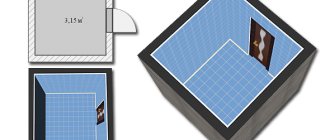In recent years, there has been almost no talk about Sony smartphones, although they are being released steadily. Perhaps a release window of approximately every six months seems too stable.
Buyer interest is waning because it's hard to compete with the endless hype about a 108-megapixel camera, a pop-up front camera, or 65W wireless charging.
But the company clearly did not deserve a zero share of sales for 2021. Maybe smartphones don’t sparkle with innovation, but the company doesn’t allow outright hackwork.
Recently, the Japanese launched the new Sony Xperia 5 II priced at 69,990 rubles.
And in the new ruble realities, this price of a basic iPhone 12 mini is significantly cheaper than some top-end Huawei. On topic: Everyone says that the iPhone 12 is expensive, but look at Huawei in Russia.
90 thousand rubles! And this despite the fact that the body weight and diagonal are identical to the iPhone 12 for 79,990 rubles, and the battery is much larger (4000 mAh versus 2815 mAh).
In the review below, I figured out how the Xperia 5 II differs from most other smartphones, why it is the last bastion of the representative segment in Android culture, and what pitfalls prevent the company from raising the price tag to the level of the maximum iPhone and Samsung.
Let's start with the filling and design. We were surprised from the first seconds.
This is a real flagship. And not mini at all
The trend in recent years has been sleek features and frameless screens. It will be difficult for an unenthusiastic person to distinguish Samsung smartphones from Vivo, Xiaomi, ASUS, LG or Huawei. Based on the design of the case in 2021, only two players stand out against their background: Apple and Sony.
The product of the first one will be noticed by anyone due to its unibrow and straight edges, the second one attracts attention with its proportions and strict classic design in the form of a bar.
The smartphone from the Japanese is firmly built and looks elegant. For many, the only problem that may arise is that its appearance has changed little in recent years, although it has gone through trendy transformations with rainbow tints and roundness.
Therefore, I think it’s a reasonable decision to make the appearance almost identical to the first version of the Xperia 5. Frequent changes in appearance almost always harm the feeling of novelty. And there is plenty of it here.
Don't find fault with the filling:
| Retail price: | 69,990 rubles |
| CPU: | Qualcomm Snapdragon 865 |
| Screen: | OLEDFull HD+ (2520 x 1080 pixels)Frame rate 120Hz |
| Cameras: | Main: 24 mm, 12 MP, ƒ/1.7, 82°Ultra-wide-angle: 16 mm, 12 MP, ƒ/2.2, 124°Telephoto: 70 mm, 12 MP, ƒ/2.4, 34°Front: 8 MP, ƒ/2.0, 84 |
| Memory: | 8 GB RAM 128 GB storage Up to 1 TB microSDXC |
| Connectors: | 2 nanoSIM or 1 nanoSIM and microSD with microSD support XCUSB-C3.5 mm audio output |
| Strength: | Waterproof (IP65/68)Corning® Gorilla® Glass 6 |
| Audio: | Front stereo speakers Dolby AtmosStereo recordingHardware decoding 360 Reality Audio |
| Battery: | 4000 mAh Fast charging USB Power Delivery |
| Operating system: | Android 10 upgraded to Android 11 |
| Weight: | 163 g |
| Dimensions (H x W x D): | 158 x 68 x 8 mm |
And even though the smartphone has an older brother in the form of the Xperia 1 II with a 4K 6.5-inch screen, the only difference is in the size of the display and its resolution.
Functionally, the devices are the same, and therefore consider this review to be a snapshot of the maximum that Sony is ready to offer.
Design
In appearance, the new product differs little from the GH5. It's still the same weatherproof magnesium alloy case, compact (139 x 98 x 87 mm) and lightweight (727 grams). If you look closely, you will notice that there are several red accents. The REC button is also colored in this color so that you don’t get confused about what to press. Those who are particularly picky will find that one of the customizable keys is now used by default to select color profiles, but its function can still be changed to whatever you want.
The big red button is for recording video. Photo: imaging-resource.com
The viewfinder has not changed - it's still the same OLED panel with 0.76x magnification and 3.68 million dots. However, thanks to the new processor, you can choose the viewfinder refresh rate: at 120 Hz the image will be smoother.
The display has become two tenths of an inch smaller (3″ versus 3.2″ in the previous generation), but it is also a little “sharper” and brighter, which is very good for daytime shooting.
It’s unusual to use a long screen for the first two days
For the second year, Sony has included a display with the 21:9 aspect ratio popular in cinema in its top models. The bright OLED, Full HD+ resolution with HDR, and 120Hz frame rate make it a real beast.
The screen occupies almost the entire front panel, only at the top and bottom there are neat strips for the front stereo speakers and selfie camera.
There is an Always On function
This approach looks beautiful in proportions, although at first it seems that the interface is cramped in a narrow window. This short time is confusing, because we all used smartphones with even 4-inch diagonals, which were much narrower. The eye gets used to it quickly.
However, from a practical point of view, the new format has a disadvantage.
Due to the length, it is inconvenient to reach the upper elements with your finger and, moreover, adjust the brightness of the screen, even with large hands.
This problem was not solved in stock Android (more about it below), so I had to find a solution myself. For example, learn a new grip.
The narrow body fits into your hand like a glove
Due to the unusual ratio, the body itself is equally narrow and long. Thanks to this, the 6.1-inch diagonal disappears in the palm of your hand.
The body feels unusual, as if this monolith of deep blue color came from a parallel world, where bangs, holes and pop-out mechanisms were not invented for front cameras, and the struggle for framelessness lost its meaning.
The shape clearly translates into sensations: the Xperia 5 II is comfortable and comfortable to hold, while the iPhone XR seems incredibly plump and bulky in comparison. Every time someone I knew picked up a smartphone, people praised its ergonomics.
The width of the device allows you to place the “five” exactly in the center of your palm and use it that way. The new sensation created the effect of something completely different and unusual in the hand.
It’s difficult to convey the feeling in words, but exactly the same thing is said about the DualSense gamepad with its adaptive triggers and haptic feedback.
This soft vibration, similar to that found in the iPhone, is also present in the 5 II. It is not used so often in the system, but it additionally emphasizes the tactile novelty of the smartphone.
The model was released in two colors: midnight blue and black. They look good, but the first fuse is especially due to its diversity. Depending on the lighting, it can play the role of both colors at once.
They went too far with the buttons on one side, but there is one for the camera
For some reason, absolutely all the keys on the Xperia 5 II were decided to be placed on the right side. And there are five of them here:
1.2. Volume swing 3. Lock with built-in fingerprint scanner 4. Call Google Assistant 5. Quickly turn on the camera.
Because of this, sometimes one of the buttons may be pressed accidentally. Most often it was the voice assistant, although its activation can be disabled in the settings. And thus leave the key inactive.
We have seen the lock button with the scanner many times; here it goes deeper into the edge. This way, your finger naturally fits into the recess, and you don’t have to specifically grope for the sensor.
But a definite novelty was the photo key mechanism. By long pressing it, you can enable shooting applications in any state of the smartphone, even when locked.
But the main secret is that it is also used for preliminary focusing.
Exactly how it works on professional cameras with interchangeable lenses: aimed at the composition, pressed it halfway, focused, and took the shot.
In pro shooting mode, the Xperia 5 II absolutely replicates the experience of working with expensive cameras.
Usually, when smartphones try to imitate such an experience, the result is more of a parody of the regime. But I’m less surprised by Sony’s result, because the company itself has been selling cameras “for adults” for a long time.
Matrix
There are no radical changes here either – it’s the familiar 20.3-megapixel 4:3 format CMOS sensor. The sensor shoots beautiful, “sharp” 4K video, and the rolling shutter effect is still minimal. Of course, low light photography is not best in class, since this is a compact MFT sensor, but otherwise the picture is excellent.
Although the sensor hasn't changed "physically", Panasonic claims dynamic range has increased by 1/3 stop due to improved processing processes. This should have a good effect on the detail of the bright areas of the frame. In addition, the matrix has an additional anti-reflective coating, which means less flare and glare when working with backlight.
The normal camera mode hardly surprised me
To understand why it is so important to look at the level of photography of this smartphone and understand the roots of the perfect mimicry of large cameras, we need to look at the picture beyond smartphones.
Sony has grown into a broad corporation with great resources. Her portfolio includes professional monitors, projectors for cinemas and video cameras for filming. A lot of things have to do with visual media.
Including in 2021, Sony cameras occupied 20% of the full-frame camera market, only Canon has more.
This happened because with the release of the Alpha series, the Japanese popularized the class of mirrorless devices, where the matrix is located immediately behind the lens. But cameras in smartphones work on the same principle.
Therefore, I expected special results from the Xperia 5 II. In some strange area this happened.
The set of lenses for the new product is as follows:
Main 24 mm, 12 MP, ƒ/1.7 Ultra-angle 16 mm, 12 MP, ƒ/2.2 Telephoto 70 mm, 12 MP, ƒ/2.4
All of them have excellent characteristics, at the flagship level. Due to the size problem of smartphones, how they handle images at the software level is much more important these days.
Telephoto
After testing a dozen Android smartphones, the standard camera application without a dozen settings and modes in the Xperia 5 II even seems minimalistic. This is good, because there are no useless improvers and masks that no one uses anyway.
But there is also an unpleasant surprise hidden in minimalism.
While recording video, your smartphone will not allow you to change the lens, that is, the zoom will always be digital, and you won’t be able to expand scenes to an ultra-wide angle if you initially started recording from the main one.
Main
All cameras use eye focusing. Right during shooting, a green square is fixed on it, which moves in real time in the frame following the movement of the head. Looks exactly like the Alpha series cameras.
Night mode was not given a separate button on the screen - it is built into the application “behind the scenes” and works automatically.
Overhead
When the smartphone realizes that the conditions are dark, the name of the potential photo type, such as Day or Night, will appear in the upper left corner.
After pressing the shutter, the Xperia 5 II asks you to stand and hold the smartphone in one place. It turns out the same night mode, and the result is just as bright and rich.
Design features of the series and facade finishing
The external panels of the building are made of three-layer expanded clay concrete 32 cm thick; The walls inside the house, which are load-bearing, are reinforced concrete panels with a thickness of 16 cm, and the interior partitions are made of gypsum concrete and have a thickness of 80 mm. Floor ceilings are made of reinforced concrete panels 14 cm thick. The entire area under the building is occupied by a spacious technical basement, where engineering networks and communications are located.
Houses of series II-57 are lined with tiles (small-sized, glazed or ceramic)
yellow, blue, pink or light green. Heating, hot and cold water supply - central city networks. The disadvantages of the series are considered to be poor sound insulation of inter-apartment walls and insufficient ventilation.
Sony chose between HDR and natural shots...
Both.
But the cameras turned out to be closer to naturalness.
The smartphone was not loaded with heavy processing algorithms like the ultra-smart Smart HDR 3, as in the iPhone 12, or Night Portrait Mode from the Pixel 5. Here, objects and composition usually come out as they are in reality. Without “magic” and pulling out shades.
During the test, I found one minus and one plus for this approach.
– Shadows sometimes come out too contrasty, which is why the brightness of the picture suffers + Thanks to minimal processing, the image looks more familiar and three-dimensional
The color sometimes comes out too saturated, like the Samsung, but overall the pictures look like real life, and not digital paintings, like the iPhone and Pixel.
I'm sure both options deserve their right to exist, because in 2021 they have become two sides of the same small sensors.
However, not everything depends on the standard application. For those who like fine-tuning, real pro options have been added to the shell.
Contents of delivery
Included with the binoculars is this very leather case with the inscription “PENTAX”.
Binoculars in a case can be worn on the binocular belt passed under the lid of the case or on a waist belt because The case has a mount for it.
The binocular strap has an interesting fastening. If you turn the strap in the other direction, there is a button under it. Just press the button and move the belt towards the button - it detaches. Everything ingenious is simple.
Special shooting modes are ideal. But they are not for everyone
Sony has finally decided to pull out its biggest asset in the field of smartphone cameras. Years of experience with professional technology paved the way for Xperia, and Photo Pro and Cinema Pro appeared in the 5 II.
Photo Pro is made just for photos. It absolutely duplicates the settings from mirrorless cameras visually and functionally.
There is control over shutter speed in the range from 30″ to 1/8000, ISO from 64 to 3200, focus , white balance and all other “adult” switches, including the ability to shoot in RAW .
The mode wheel allows you to choose from M with full control, S with shutter priority and P with exposure priority. Even the gyroscope for a level horizon can be activated.
What is important is that any setting is applicable to each of the three lenses, only the front one does not work.
video-only Cinema Pro
The application has built-in color profiles of cameras based on the CineAlta brand from cinema. Videos shot in 21:9 format and such color correction immediately make almost any picture atmospheric.
The settings allow you to shoot clips in 4K and 120 fps simultaneously, albeit without sound. So far, only this smartphone and Zenfone 7 Pro can do this.
Even in the application, you can fix the necessary points for focusing and switch them by pressing for a measured and smooth transition in blur.
The result was a full-fledged experience of working with cameras, which is sometimes lacking during creative or work shooting on a smartphone. The Xperia 5 II gives maximum freedom in this regard.
The result was the following photos, taken in RAW and later processed in Camera RAW:
The only pity is that a minimum number of people will be able to evaluate such decisions.
I have seen dozens of times how my friends and acquaintances picked up a DSLR camera and understood absolutely nothing about the precise settings. And I had to explain the basics about how light is affected by ISO, shutter speed and aperture.
However, for those who are interested in deep control over the frame or want to learn it, Sony even has a separate page with tips on Pro modes.
What amenities did they bring? For example, you can remove the SIM without the bracket
Dynamic vibration is similar to the softer operation of a regular motor, and differs from the soft tapping of the iPhone with its Haptic Touch.
Moreover, in the Sony model it is just as accurately and accurately synchronized with the actions in the system.
For example, when you open the multitasking panel, unlock or select the time on the alarm clock, a slight buzzing sound appears, similar to the work of springs under the screen.
Water protection here with an IP65/68 rating. Since such certification is generally free, the meaning differs in different companies.
For example, Apple boldly shows that their new iPhone 12 can be filled with coffee, juice, cola and other liquids with impurities.
Sony cautions that the Xperia 5 II will withstand immersion in only 1.5 meters of running water for 30 minutes.
The SIM tray without a paperclip can be opened with your fingernail through the notch. Surely the limitation on water protection rests on this convenient thing that Sony smartphones have had for a long time.
Of course, the question remains open whether such a mechanism or moisture protection is more necessary. In my opinion, it’s better to upgrade the second one and add eSIM capability to your smartphone.
But here it is worth considering that many will have a micro-SD card in the tray, constant access to which remains a great need for many.
Xperia Companion is a special program from Sony for dropping files via a direct USB-C connection, making a backup copy, syncing music or sending files to a new smartphone.
The prompt to install it pops up the first time you connect, and the companion app itself works smoothly. I can say almost the same about Android.
The stereo sound from the front speakers is so powerful that a thin glass block begins to bounce when lying on a bare table. So the volume margin here is greater than physics can withstand.
The 5G modem is not yet relevant for our country, but the Qualcomm Snapdragon 865 from the major league copes 100% with every task, be it gaming, photo processing or working with the camera.
Among the usual functions, there is no wireless charging, but a 3.5 mm headphone output is left. And this despite the fact that Sony has been leading in the quality of its wireless headsets for the third year now.
Additional changes
The GH5 II comes with some more user-friendly features.
Firstly, there is stabilization with a rating of 6.5 stops of exposure instead of 5. The camera is now especially good for shooting on the go and vlogging.
Secondly, Panasonic changed the battery to a slightly more capacious one, but the number of shots - 410 per charge, according to the CIPA rating - remained unchanged (don't forget about the new processor). But now the camera is equipped with a USB-C port that is compatible with PD adapters, so it can be quickly recharged on the go.
The rotating mechanism is the most convenient screen design for videographers. Photo: imaging-resource.com
A small but very important change concerns audio recording. Many users complained that the GH5's preamps were too sensitive: sometimes, when connecting an external microphone, it was simply not possible to make the camera itself quiet enough. The new generation has a special “low” sound level setting (Audio level: low). And the volume difference can now be reduced to -18 dB (previously this was only possible to -12 dB). All this makes the camera more versatile for use with various equipment.
Pure Android remains itself
Sony abandoned its own shell a couple of years ago, and they did it for good reason. It is not needed everywhere, and specifically for the Japanese, with their falling smartphone sales, it is better to focus on other competitive advantages.
In addition, the angular design from Android 10 looks appropriate here.
They are planning to update the model to Android 11; the version has not yet arrived on the test sample.
At the same time, in comparison with iOS, the use of the software cannot be called ideal.
Widgets remain crude tiles from the early 2010s. And to bring up the control panel with buttons for Wi-Fi, Bluetooth, screen brightness and everything else, you need to swipe from the top of the screen twice. At the same time, first seeing the always cluttered notification center.
I’m sure that users of Google’s OS don’t even notice such nuances, because they will probably be the ones who will look towards the new product from Sony.
Because the company has not been included in the trends of IT publications for too long, and therefore not everyone remembers about its smartphones.











